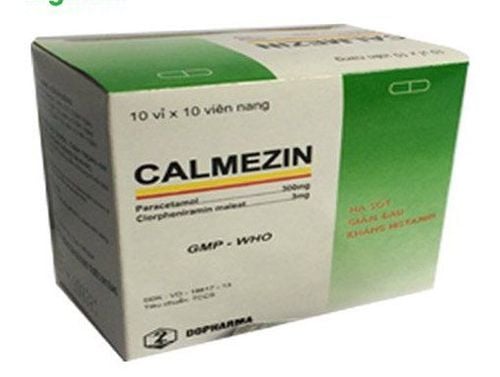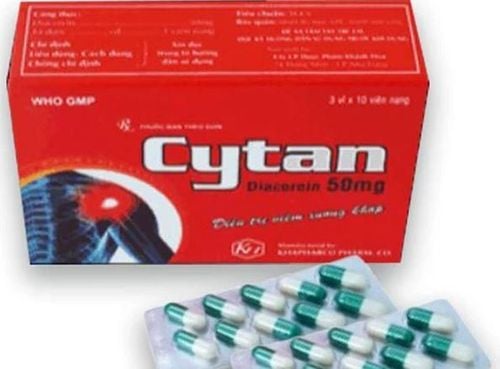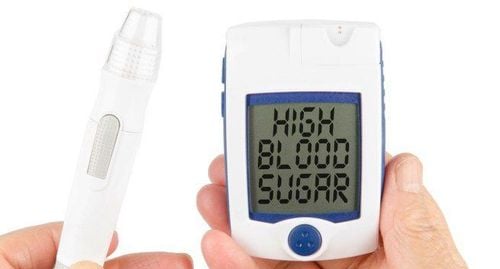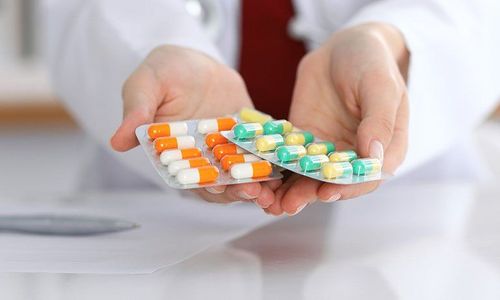This is an automatically translated article.
Leg muscle pain relievers are drugs that help quickly relieve the symptoms of muscle pain in the legs caused by muscle tension, caused by osteoarthritis causing muscle pain. To avoid drug abuse causing many unwanted effects, we should only use drugs when absolutely necessary.
1. What is leg muscle pain?
Leg muscle pain or muscle pain in general occurs when a muscle group is tight or contracted, leading to muscle pain. Depending on the cause, other symptoms may also be present.
Causes of leg muscle pain are very diverse, can include causes such as:
Due to walking or exercising too much: When working, walking or exercising the leg area too much, the muscles must be strengthened. Sudden movement, the body does not respond in time to provide enough oxygen, will provide energy by anaerobic metabolism. Substances produced by these anaerobic metabolism are the cause of muscle pain. Sometimes, excessive activities will cause injuries such as sudden muscle strains, sprains also cause pain in the leg muscles. Stress: When the body is under stress, it releases a hormone that increases muscle tension and increases pain sensitivity. In addition, when stressed, the operating speed of the circulatory system tends to decrease, so it reduces blood circulation and oxygen exchange for cells in the body, causing muscle pain. Causes of osteoarthritis also cause leg muscle pain such as: degenerative knee disease, herniated disc, arthritis... Because when the pain is caused by other factors, the muscles also contract, leading to muscle pain. . Infectious diseases: Some diseases such as colds, flu, dengue fever, foot infections... also cause leg muscle pain and body pain. This case is often accompanied by systemic manifestations such as fever, headache, digestive disorders ... When treating, it is necessary to treat both the cause and the symptoms of the disease. Fibromyalgia: This is a generalized muscle pain with no known cause. Pain throughout the body, especially around joints, tendon attachment points cause fatigue and insomnia, increased risk of depression but no physical damage to muscles, bones and joints. The pain is often chronic, causes chronic fatigue syndrome, and is aggravated by stress. Leg muscle pain can vary from person to person, with some people not feeling much pain and others having pain that affects their ability to walk. Depending on the case, it can be treated with drugs or without drugs.
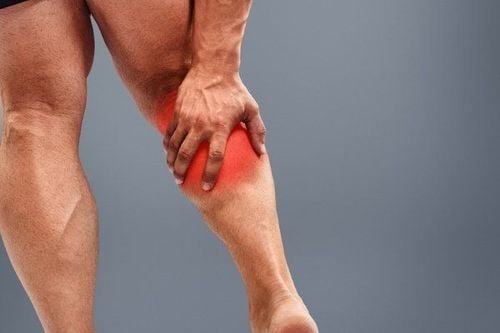
Đau bắp chân khiên người bệnh gặp khó khăn trong di chuyển
2. What kind of foot pain reliever?
Drugs used to treat symptoms of leg muscle pain can be used as:
Pain relievers include drugs:
Paracetamol (acetaminophen): A common pain reliever and fever reducer. , commonly used to relieve mild to moderate leg muscle pain. The drug is used at a dose of 10-15mg/kg body weight and is given at least 4 to 6 hours apart if the patient is still in pain. Non-steroidal anti-inflammatory drugs (NSAIDs): This group of drugs is used a lot with analgesic and anti-inflammatory effects. These drugs include over-the-counter drugs such as ibuprofen, naproxen, aspirin... Medicines that need to be prescribed by a doctor include diclofenac, meloxicam, celecoxib... Note, this drug has many side effects like the one above. gastrointestinal tract increases the risk of stomach ulcers, gastrointestinal bleeding complications, the drug also increases the risk of stroke... so do not use more than 5 days without consulting a doctor. Corticosteroids: This is a group of steroids that have strong pain-relieving effects. Used in cases of severe pain, pain due to autoimmune diseases and myalgia that have not responded to previous NSAIDs. However, the use of the drug is very cautious because if used incorrectly, it will cause many side effects such as hair growth, osteoporosis, drug dependence, adrenal insufficiency, weakened immune system... Therefore, this medicine needs to be taken according to the dose and method prescribed by the doctor. Opioids: This is a class of pain relievers that can be addictive. Opioids are a group of very strong pain relievers, often used for severe muscle pain. Indicated for use when the above pain relief measures have been used correctly but do not bring the desired effect. Some common opioid medications include: morphine, fentanyl... Opioid side effects can include feeling nauseous, constipated, or drowsy, slow heart rate, and slow breathing. This medication needs to be taken by prescription and managed like a narcotic, as long-term use can lead to addiction. So talk to your doctor if you are taking it for a long time. Muscle relaxants: In addition to pain relievers, muscle relaxants are often used in combination to increase their effectiveness. The drug is used in combination when there is a condition of skeletal muscle spasms, muscle spasms, and a lot of pressure such as pain caused by osteoarthritis, acute neck pain... Some common muscle relaxants are baclofen, cyclobenzaprine , myonal...

Thuốc giảm đau cơ chân có nhiều loại khác nhau cần dùng theo chỉ dẫn
3. Should I use pain relievers for leg muscles?
Leg muscle pain is a common condition with cases of pain caused by exercise or pain caused by excessive movement, which usually relieves itself after 2 days with rest, cold compresses, compression bandages, and elevation of the limbs. hurt (RICE principle). However, in cases where pain is not relieved or pain due to other causes but feels pain that greatly affects activities, it is necessary to use pain relievers properly.
The use of drugs should comply with the WHO analgesic level, as follows:
Step 1: Non-morphine drugs (Paracetamol, low-dose non-steroidal anti-inflammatory drugs). Used in cases of mild to moderate pain. Step 2: Using a combination of group 1 drugs with narcotic pain relievers with weak effects (Codeine, Dextropropoxyphene, Buprenorphine, Tramadol). If using step 1 does not work. Step 3: Strong morphine, used when second-line drugs do not respond. Using pain relievers can bring quick results, but we always need to be aware that it can bring side effects. Therefore, do not abuse drugs, combine drugs indiscriminately and if used ineffectively, you should visit a doctor to know the specific cause.
In addition, some non-drug measures should be combined to help relieve leg muscle pain, including:
Rest during pain, avoid walking or exercise that increases pressure on the leg. Using heat therapy: You can apply a cool compress in the early stages of the disease or when the muscle area is red, hot and swollen. Apply warm compress when suffering from chronic pain, not see red hot swelling. Massage: Using your hands to massage the painful area is a measure to help relieve pain and reduce discomfort. Topical analgesic: with the main active ingredient is methyl salicylate, which helps relieve pain and inflammation with local effects. Can be applied 2 to 3 times per day for less than 5 days. In addition, other non-drug methods such as acupuncture, electrical pulses, etc. can be used to treat leg muscle pain, to limit the use of oral medications. Gentle and regular exercise when muscle pain is gone is an effective preventive measure. It is advisable to warm up thoroughly before exercising to limit muscle pain caused by overtraining. Leg muscle pain can be caused by many reasons, the use of pain relievers helps you to relieve the pain quickly. But don't take it too long and too often, which makes you more susceptible to side effects. Instead, non-pharmacological measures should be used and enhanced preventive measures should be taken to avoid recurrence. When the pain is too much, you should go to medical facilities for proper examination, diagnosis and treatment.
Please dial HOTLINE for more information or register for an appointment HERE. Download MyVinmec app to make appointments faster and to manage your bookings easily.




